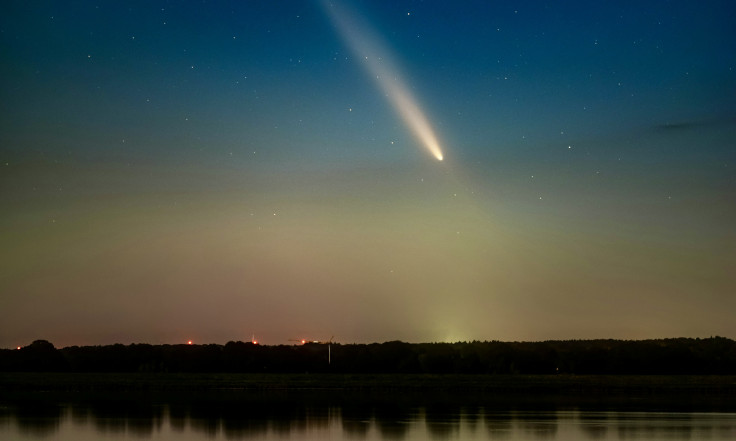Is 3I/ATLAS Really Firing an Engine? Harvard Prof Claims Alien Tech May Be Powering the Object
Is interstellar object 3I/ATLAS an alien ship using an engine?

When a visitor from deep space passes through our cosmic neighbourhood, we expect a silent, tumbling piece of rock or ice. But what if that visitor deviates from its path? What if it glows an unnatural colour and moves as if propelled by an unseen force?
This is the puzzle presented by 3I/ATLAS, the third known interstellar object to enter our solar system.
Harvard astrophysicist Avi Loeb is now pointing to new observations, suggesting the object is exhibiting 'non-gravitational acceleration'. In other words, something might be pushing it.
Is 3I/ATLAS Firing Some Kind of Engine?
The most startling claim from Loeb centres on the object's trajectory. As it continues its journey through our solar system, 3I/ATLAS appears to be accelerating in a way that gravity alone cannot explain.
Is it, as Loeb provocatively asks, revving an engine?
'There was some propulsion that moved it away from its original trajectory, and I would have expected it would lose 10 to 20% of its mass as a result of the recoil', Loeb told Banfield. This observation challenges the conventional models of a simple comet.
This prospect of propulsion might also explain another mystery: its colour. As 3I/ATLAS made its closest pass by the Sun, it registered a distinct blue appearance.
Loeb speculates in a recent blog that this could originate from 'a source of artificial light'. He does, however, offer a natural explanation, noting it could also be the 'signature of ionised carbon monoxide... for a natural comet'.
Why This Visitor Is Baffling Scientists
The object's strange propulsion is not the only puzzle Loeb has documented. While analysing data over the past several weeks, he has compiled nearly a dozen anomalies that defy easy explanation.
Perhaps most striking is its lack of a traditional comet's tail. Typically, as a comet approaches the sun, ice vapourises to create a long, visible tail of gas and dust. 3I/ATLAS, despite its close solar pass, remains stubbornly tailless.
Then there is its sheer size, which is comparable to the footprint of Manhattan. This, combined with its unusual chemical signatures, paints a picture of an object far more complex than a simple chunk of interstellar ice.
Sceptics, Supporters, and the Hunt for Clearer Images
Not everyone is convinced by the 'alien tech' hypothesis. Some observers remain deeply sceptical of Loeb's more sensational theories.
NASA, for the record, maintains that 3I/ATLAS is a harmless comet and poses no threat to Earth.
Even so, others have rejoiced at the way Loeb's curiosity has captured the public's imagination, sparking widespread interest in space among non-scientists.
The object is expected to reach its nearest point to Earth in late December, though 'close' is relative at 170 million miles. It is projected to leave our solar system for good in January.
🚨 BREAKING: NASA GOES DARK AS 3I/ATLAS DEFIES GRAVITY ☄️
— Ezee (@EzeemmaCraic) October 31, 2025
Harvard’s Avi Loeb just dropped a cosmic bombshell — new data shows 3I/ATLAS didn’t follow gravity at perihelion… it accelerated sideways. 🤯
Something pushed this interstellar object beyond sunlight and physics itself.… pic.twitter.com/bdggRCQ716
Before it vanishes, Loeb continues to urge NASA to release high-resolution images taken on 2 October. The pictures were captured by the space agency's HiRise camera on the Mars Reconnaissance Orbiter.
He suggests this valuable information may have been delayed by federal government issues.
'When you have a visitor to your backyard, you better know its nature', Loeb stated. 'We can't afford to just adopt the most likely interpretation, which is that it's a natural object'.
The name 3I/ATLAS derives from its status as the third known interstellar object, discovered by the Asteroid Terrestrial-impact Last Alert System.
© Copyright IBTimes 2025. All rights reserved.




















